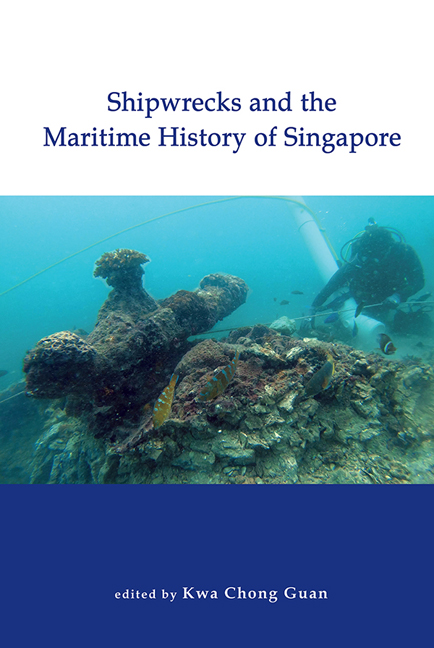Book contents
- Frontmatter
- Contents
- Foreword
- Acknowledgements
- Contributors
- 1 Introduction: Two Historical Shipwrecks and Their Implications for Singapore History
- 2 The Temasek Wreck
- 3 The International History of Temasek: Possibilities for Research Emerging from the Discovery of the Temasek Wreck
- 4 Singapore’s Waterways before the Modern Era
- 5 A Seventeenth-Century Port Settlement in the Kallang Estuary
- 6 The Shah Muncher
- 7 Singapore and the Country Trade in the Late Eighteenth and Early Nineteenth Centuries
- Index
Foreword
Published online by Cambridge University Press: 01 March 2024
- Frontmatter
- Contents
- Foreword
- Acknowledgements
- Contributors
- 1 Introduction: Two Historical Shipwrecks and Their Implications for Singapore History
- 2 The Temasek Wreck
- 3 The International History of Temasek: Possibilities for Research Emerging from the Discovery of the Temasek Wreck
- 4 Singapore’s Waterways before the Modern Era
- 5 A Seventeenth-Century Port Settlement in the Kallang Estuary
- 6 The Shah Muncher
- 7 Singapore and the Country Trade in the Late Eighteenth and Early Nineteenth Centuries
- Index
Summary
On 18 May 2015, marine salvage master Mr Ramdzan Salim informed our Archaeology Unit (AU) about a possible historic shipwreck he had found during salvage work on a capsized barge in the vicinity of Pedra Branca. In his email were photographs of coral-encrusted green plates that he had recovered from the seabed. Dr Michael Flecker and the staff of the AU had no difficulty identifying the coral-encrusted plates as fourteenth-century celadon plates from the Longquan kilns in Zhejiang Province, China. Our AU colleagues met Mr Salim and one of his divers on 22 May to confirm the finds and its location.
A year-long process of discussions and planning with the National Heritage Board (NHB) followed before an exploratory survey was launched to confirm that the recovered Chinese celadons were part of the cargo of a ship that had sunk in the vicinity of Pedra Branca. Thereafter the NHB commissioned the AU to undertake the excavation of the wreck over the next three years.
Dr Flecker's essay in this volume summarizes the results of this three-year archaeological excavation of the shipwreck, which recovered some four tonnes of Chinese ceramics. A follow-up survey of the vicinity located another shipwreck, which was excavated from 2019 to 2021 and has been identified as an eighteenth-century country trader.
The essays in this book by Temasek History Research Centre (THRC) alumni are the first to provide a historical context of these two shipwrecks since the public announcement of their discovery on 16 June 2021. These essays developed from presentations at a THRC webinar on these two shipwrecks in early April 2022. I would like to thank my colleagues for accepting our invitation to share their preliminary ideas on these two wrecks with a wider audience.
The excavation of these two historic shipwrecks was the most complex and longest archaeological investigation undertaken by the AU since its establishment in 2010. To be sure, archaeological excavations in Singapore began relatively late, in 1984 on Fort Canning. Thus far, the AU has undertaken excavations at Fort Canning Hill, Empress Place, Adam Park, the National Gallery Singapore and the Victoria Memorial Hall.
- Type
- Chapter
- Information
- Shipwrecks and the Maritime History of Singapore , pp. vii - viiiPublisher: ISEAS–Yusof Ishak InstitutePrint publication year: 2023

